The Comic Renaissance Of The '00s, Part One: The Beginning Of The New Millennium
The first decade of the 21st century was something of a renaissance for the comic industry.
I’m actually really excited to talk about this. 2000 through 2010 was a special time in comics for me. I started reading in the 1990s, 1991 to be exact, but it’s impossible to say that was a great decade for comics. Well, that’s not entirely true.
The ‘90s themselves are a rather interesting time in comics for a variety of reasons, but the biggest, and the one that plays into the ‘00s resurgence the most, is the impression that the ‘90s were a terrible time for the comic industry. This is only true from a certain point of view and that point of view is Marvel-centric. The ‘90s were terrible for Marvel Comics. Sure, sales were often amazing, but the quality, or lack thereof, was a problem. Marvel spent the decade chasing Image, and that meant focusing on art and not writing. Looking at Marvel’s writers at the time, it was a lot of the same people who had been around the company for years. Marvel didn’t really make any writing superstars in the ‘90s, and it wouldn’t be until the end of the decade, when talents like Kurt Busiek, Dan Jurgens, and Mark Waid rebooted the Avengers, Iron Man, Thor, and Captain America and the Marvel Knights line debuted that writing would start to become important again. There was also Marvel embracing the collectors’ bubble, something that almost killed the publisher and the direct market.
Always remember this - Marvel almost completely destroyed the entire comic industry. Sure, Image and DC played a part, but Marvel was the true culprit.
Image sold great, but the writing wasn’t always there and that’s being nice about it. There’s a reason when Alan Moore came over to Image to write titles for Wildstorm and Extreme that things got a lot better. Image’s momentum was never going to sustain itself, though. Some of the company’s biggest draws - Todd McFarlane, Jim Lee, and Rob Liefeld - stepped back from doing comics as much as they had before. Image faded as the ‘90s progressed and much of the indie market faded with it. Valiant started the decade huge, but died out. Chaos Comics had its moment, but it didn’t last. The Bad Girl trend did a lot of damage to the indie market, as mean girls in T&A riddled comics milked the trend to death.
However, companies like DC Comics and Dark Horse Comics were actually doing quite well creatively. Sales might not have matched Marvel or Image, but DC and Dark Horse put out a lot of the greatest comics of the decade. Vertigo was a massive part of DC’s success in the ‘90s. The Sandman ran until 1996, Preacher dropped, Hellblazer was a solid book, Doom Patrol and Animal Man kept their momentum after Grant Morrison left. Speaking of Morrison, they dropped amazing Vertigo books throughout the ‘90s - Sebastian O, Mystery Play, Kill Your Boyfriend, Flex Mentallo: Man Of Muscle Mystery - as well as their opus, The Invisibles, joining the elite level of comic writers. DC’s superhero books were also doing well creatively for most of the decade. The early days of the ‘90s, saw the success of The Death Of Superman/Funeral For A Friend/Reign Of The Supermen/The Return Of Superman and Knightfall, which are much better reads than most ‘90s gimmick stories, and the company rode high on that for a while. Mark Waid’s run on The Flash made Wally West an icon. Kyle Rayner taking over for Hal Jordan reinvigorated Green Lantern. Legion Of Superheroes and Legionnaires were reasonably popular and very, very good. Robin and Nightwing began the birth of the modern Bat-Family. JLA is the greatest team book ever. The ‘90s weren’t always perfect for DC - the Superman titles fell to gimmick storytelling - but books like Hitman, Starman, Hourman, JLA, Stars And STRIPES and the beginning of JSA showed just how well things were going for the publisher.
Meanwhile, Dark Horse put out stellar licensed comics - Star Wars, Aliens, Predator - as well as Hellboy, Sin City, and manga classics from Masamune Shirow and Katusihiro Otomo. There was also the rather underrated superhero line they started - “Comics’ Greatest World” - that was better than it gets credit for, especially Ghost.
The ‘90s would end with things getting better across the industry - Marvel decided to push writer driven comics from big names, which was taking a page from DC. Speaking of DC, they were putting out excellent comics, and playing up the concepts of legacy. The indie market was at a much lower ebb than it had been, partly because of Image’s style over substance approach, the egos involved, and company’s founders fracturing. McFarlane focused on other businesses, Jim Lee left of his own volition and sold Wildstorm to DC, Liefeld and Silvestri clashed, which caused Silvestri to leave the publisher before returning when Liefeld left.
DC’s Wildstorm was just sort of there in the late ‘90s. Jim Lee had sold it to DC in 1998. This meant that Alan Moore, who had long been vocal about not working for DC, would become a DC employee again while putting out stellar titles like League Of Extraordinary Gentlemen, Top 10, Tom Strong, and Promethea for the “America’s Best Comics” imprint. However, there’s really only two titles to talk about from Wildstorm that would have a effect on the future of the comic industry- The Authority and Planetary. Warren Ellis and Bryan Hitch launched The Authority in 1999, with Ellis teaming with artist John Cassaday - RIP - for Planetary that same year. Both books are fantastic, although Ellis has shown his stripes as a monster since then. The Authority would take off even more after Ellis left, when Mark Millar and Frank Quitely took the book over. This comic would set the tone for much of what would happen in the ‘00s. It was irreverent and edgy, and wowed audiences. Planetary was a love letter to fiction, drawing in everything from superhero comics to Victorian novels. It made Cassaday a superstar.
Change was on the horizon and all of this would play into the first decade of the 21st century.
2000 to 2010 saw the industry come out of its funk, especially creatively. It all really begins with the changing of the guard at Marvel in the year 2000. In the ‘90s, X-Men editor Bob Harras took over as Marvel editor-in-chief, and rode the publisher almost completely into the ground. This ended in the year 2000, when writer/artist Joe Quesada, fresh off co-editing the wildly successful Marvel Knights line with his then-artistic partner Jimmy Palmiotti, was made Marvel editor-in-chief. Quesada would be joined by Bill Jemas, who would become vice-president of Marvel and work closely with the him. Quesada gave his mission statement in an interview with Wizard magazine - that he was going to fix Marvel. He started with Marvel’s bestsellers - the X-Men and Spider-Man. Spider-Man had a hell of a time in the ‘90s. Losing Todd McFarlane and Erik Larsen, the Clone Saga, and the terrible John Byrne reboot all tested the love that fans had for the Web-Slinger. Meanwhile, the X-Men were still selling well, but the ‘90s were all about chasing Claremont’s success, with various writers trying to do his style of superhero soap operas that built long term plots that would hook readers and failing. Harras brought Claremont back, but his second run on X-Men and Uncanny X-Men in the year 2000 wasn’t setting the industry on fire.
So, Quesada started by launching the Ultimate Universe line with Spider-Man and the X-Men. He recruited Brian Michael Bendis, a rising star from Image Comics fresh off the crime book Torso, to pen Ultimate Spider-Man with Spider-Man artist extraordinaire Mark Bagley. Then, he brought on Mark Millar, Grant Morrison’s protege at DC and writer of The Authority, put him with Adam Kubert, and launched Ultimate X-Men. These two books became mega-popular, but Quesada wasn’t done. On the main Spidey and X-books, he shook things up as well. TV writer J. Michael Straczynski, who had created Babylon 5 and started writing comics with the amazing Rising Stars for Top Cow/Image, was brought onto The Amazing Spider-Man, joined by artist John Romita Jr. and cover artist J. Scott Campbell. Over on the X-Men side of things, Quesada got Grant Morrison, who had come to Marvel in 2000 after a falling out with DC, to take over X-Men, rechristening it New X-Men, with Frank Quitely as artist. Joe Casey took over Uncanny, but he wouldn’t last very long.
These four books - Ultimate Spider-Man, Ultimate X-Men, The Amazing Spider-Man, and New X-Men - spearheaded Marvel’s resurgence. These books sold very well, and Marvel used their success to make bigger moves. Bendis was a superstar, and took over Daredevil, a book that had been riding high since its Marvel Knights relaunch. Bendis also worked with artist Chuck Austen on Elektra, a book that made Austen a star and saw him put out a War Machine series. Kurt Busiek’s run on The Avengers was reaching its final stages, with writer Geoff Johns soon to come over. John Ney Reiber and John Cassaday’s Captain America book became a hit. Mark Millar and Bryan Hitch’s The Ultimates was huge in 2001. The launch of Marvel MAX would finally give the House Of Ideas a mature readers line, kicking off with Bendis and Michael Gaydos’s Alias. It would also become the home to Garth Ennis for years, who would write multiple series for the line while also working on Marvel Knights’ The Punisher. Writer Robert Kirkman would also start working at Marvel, something that would change the comic industry forever in time. The first few years of the ‘00s saw Marvel leave behind the wreckage of the ‘90s.
Meanwhile, DC was soldiering along with its late ‘90s strategy - good writers and legacy. The loss of Grant Morrison was a big deal, and writers like James Robinson were also taking a step back from the publisher. Preacher ended in 2000, and Vertigo didn’t really have the big killer book to replace it. Wildstorm had Planetary and The Authority, but Millar and Quitely were on their way out and Planetary was nowhere near monthly. However, there was a rising star - Geoff Johns. Johns had started writing Stars And STRIPES in 1999, creating the future Stargirl Courtney Starsmore, a character based on his younger sister Courtney, who had died in the crash of TWA 800. Johns joined JSA when Robinson left the book, co-writing it with David S. Goyer. Yes, that David S. Goyer. JSA soon earned the sobriquet of “the best team book on the market” and that’s pretty much correct. Seriously, go back and read it if you haven’t. It’s consistently awesome. On top of that, the year 2000 saw something that no one ever thought would happen - Green Arrow became a bestselling comic, on the shoulders of Kevin Smith - you know who Kevin Smith is, I don’t need to tell you - and Phil Hester.
Morrison left a vacuum at DC. Waid stepped onto JLA, something he had done several time during Morrison’s run. He lasted until 2002 on the book and was soon replaced by Joe Kelly, who had come to DC after leaving Marvel. Kelly also was writing Action Comics, in a run that many people love. Meanwhile, writer Jeph Loeb and artist Ed McGuinness were doing great work on Superman. Phil Jimenez started a bang up run on Wonder Woman in 2001, and the Batman titles were coming off of the revitalization of “No Man’s Land”. The Legion was still semi-popular, written by Dan Abnett and Andy Lanning and introducing readers to artist Olivier Coipel, something that held over from the mid-’90s reboot. Peter David had made Aquaman into a big deal again, and was given the reins of DC’s teen heroes with Young Justice, a team focused on the teen heroes of the ‘90s - Tim Drake, Conner Kent’s Superboy, and Cassie Sandsmark’s Wonder Girl - leading new teen heroes. Meanwhile, the classic Teen Titans of the Wolfman/Perez days graduated and Titans was launched, under writer Devin Grayson and artist Mark Buckingham. DC would also get a new name, one who would help set the tone for the publisher for over a decade to come - Dan DiDio. DiDio is basically a bad word nowadays, but there was a time when fans actually enjoyed his ideas.
Shocking, I know.
The early ‘00s were an energetic time for comics. Marvel had been working on their comeback since 1998 and Quesada was able to leverage this new approach - getting the best writers for the job - successfully. Of course, the fact that Marvel was flush with cash from selling the film rights to Spider-Man, the X-Men, the Fantastic Four, the Hulk, and I think I vaguely remember that they had sold the rights to Namor back then as well. This allowed them to get some top-notch writing talent, like Morrison and Straczynski. They also built new superstar writers out of Bendis and Millar, who had both been strictly B-list, although rising B-list, before coming to Marvel. Meanwhile, DC was also making writers into stars. Johns was becoming a titan, Greg Rucka was becoming a larger part of the publisher after proving himself on 1999’s “No Man’s Land”, Ed Brubaker was given a chance to shine after years at Vertigo and on the indies, Judd Winick went from writing the indie smash Pedro And Me, based on his time on MTV’s Real World: San Francisco and his friendship with AIDS infected gay activist Pedro Zamora, to many DC titles. Jeph Loeb, after huge late-90s successes like The Long Halloween, Dark Victory, and Superman For All Seasons, was becoming a primary architect for DC and Joe Kelly, who Marvel had mistreated rather badly, was proving that he had the goods.
Marvel was outselling DC at the time, but it wasn’t like it is today, where Marvel was an untouchable juggernaut. It was a great time to be reading superhero comics for everyone. Both publishers were putting out amazing books. There were misses - Chuck Austen’s success led to him writing books like Uncanny X-Men, The Avengers, and Action Comics, creating some of the worst stories of the last forty years, and Marville is terrible and offensive - but for the most part there was way more good than bad. However, when modern fans look back at this time, one thing sticks out more than anything else - the edginess.
I turned 20 in the year 2000, having came up as a teenager in the 1990s. People like to say the ‘90s were a different time and that’s true. The taboos of earlier decades, which had been eroding since the 1960s, were broken through. The pop culture I grew up with - gangsta rap, slasher movies, Marilyn Manson and Nine Inch Nails, alternative rock, MTV, nu-metal - had become much more edgy and this continued into the ‘00s. Comics had been maturing since the 1980s, but that maturation often came without subtext. Things became dark and violent for their own sake, and the ‘00s took this to the extreme. Mark Millar was the poster boy for this, but he was far from alone. Bendis had no problem with dark, violent storytelling, and Morrison was known for using it as well. Of course, when Morrison did it, there was usually an idea behind it, but that’s neither here nor there. Marvel went way further down the edgy route than DC, spurred on by the Ultimate line, Marvel Knights, and Marvel MAX, but DC would soon start fighting fire with fire.
I’m of course talking about Identity Crisis. I’ll get to that in a second, but let’s talk about something else first.
Event comics came to be in the 1980s, specifically 1982 with Marvel Super Hero Contest Of Champions. Soon, Secret Wars and Crisis On Infinite Earths hit, refining the concept of event comics. Throughout the ‘80s and ‘90s, there would be several types of event stories - there were the linewide crossovers without a main miniseries or the main miniseries with crossovers into other titles. This time gave readers great stories like Inferno, Infinity Gauntlet, Infinity War, and Final Night, but it also gave them stories like Armageddon 2001, Onslaught, and Zero Hour: A Crisis In Time. The ‘90s killed the event story, but DC would test out the concept again with Our Worlds At War. This story was sort of successful, and event stories were about to come back in a big way.
Marvel was too busy rebuilding its line to go back to the yearly event cycle, but 2003 would see them drop Marvel Universe: The End, a book from cosmic Marvel wunderkind Jim Starlin, that felt like Infinity Gauntlet but wasn’t technically an event book. Meanwhile, DC started to plan for the twentieth anniversary of Crisis On Infinit Earths. I wrote about this build-up for CBR last year. The publisher started seeding clues throughout its line about a new crisis, one that would change everything forever, starting with Superman/Batman, a Jeph Loeb vehicle that would feature art from Ed McGuinness, Michael Turner, and Carlos Pacheco - RIP Turner and Pacheco. Meanwhile, Marvel also had a twentieth anniversary coming up, with 1984’s Secret Wars turning twenty. 2004 became the year that the Big Two both tried to revive the event comic.
Marvel went with Secret War, a book from writer Brian Michael Bendis and Italian painter Gabriele Dell’Otto, that would reveal to readers a secret war between Nick Fury and Latverian leader Lucia Van Bardas, which sucked in Captain America, Black Widow, Wolverine, Spider-Man, Daredevil, and Luke Cage, newly introduced SHIELD agent Daisy Johnson, and a bunch of B-list villains. It was a pretty good story, but it was also slowed down by delays, something that hurt it. Its ending - which saw Nick Fury leave SHIELD as leader and Maria Hill take over - was extremely important to the future of the Marvel Universe.
Meanwhile, DC got author Brad Meltzer, who was friends with Judd Winick and had worked for DC before with Green Arrow: The Archer’s Quest - probably my favorite Green Arrow story ever - to write their big event of 2004: Identity Crisis. Meltzer was joined by artist Rags Morales, who made a name for himself working on Hourman, JSA, and Hawkman. Identity Crisis often felt like the answer to Marvel’s edginess. There was the death of Sue Dibney, fridging a popular and important female character in the DC mythos, there was the sexual assault, and the grim violence. It introduced darkness into the Bronze Age Satellite League, establishing that a cadre of Leaguers mindwiped villains like the Secret Society of Supervillains and Dr. Light, as well as Batman. I’ve been told that the way I remember the story’s reception is wrong. The way I remember things, coming from the people in my LCS and Wizard magazine was that the book was controversial but still well-liked. I wasn’t on the Internet very much at the time, but apparently the message boards were up in arms about the story.
I liked the book back then, although I’ve re-evaluated it now. I still think there’s some good ideas at its core - I like the mindwipes, for example - but the fridging and sexual assault of Sue Dibney is a terrible thing. Jean Loring, the Atom’s longtime spouse, turning into a crazy murderer because she wanted him back so badly is a bad idea. Identity Crisis is one of many examples of edginess going wrong in the ‘00s. However, it sold well, and DC learned the wrong lesson from it.
I’m going to wrap this up soon, but I have a few more things to get into.
Over at Marvel, Grant Morrison ended up leaving in 2004. In Morrison’s book Supergods, they talk about shouting matches with Marvel editorial and this caused their run on New X-Men to end. As a Grant Morrison superfan, this was a big blow to twenty-three year old me, and would lead to Marvel beginning a campaign of marginalization of Morrison’s ideas, which included bringing back Chris Claremont for a third run on Uncanny X-Men and Austen jumping over to X-Men, the New dropped after Morrison left. Bill Jemas would leave the publisher as vice-president as well. Mark Millar ended up leaving Ultimate X-Men with issue 33, but would soon join Wolverine (Vol. 3) for a thirteen issue blockbuster. Bendis, who had become Marvel’s most popular writer and their first homegrown superstar writer in a long time, took over The Avengers for “Avengers Disassembled: Chaos” with artist David Finch, who he had worked with on the post-Millar Ultimate X-Men for twelve issues.
DC soldiered on with their plans for Crisis On Infinite Earths’ anniversary, ending Young Justice, Titans, and The Legion. This would lead to Geoff Johns and Mike McKone’s Teen Titans and Judd Winick and Tom Raney’s Outsiders. Johns enthralled readers with solo books like Hawkman and soon brought back Hal Jordan with Green Lantern: Rebirth, which would lead to a new volume of Green Lantern, a book that would become one of the biggest of the mid and late-00s. Jeph Loeb and Jim Lee would team up for a twelve issue run on Batman - the blockbuster story known as “Hush” - and blew the doors off the sales chart. Morrison returned to DC, first working at Vertigo on books like Sea Guy, Vimanarama, We3, and The Filth.
Finally, Image would see glimmers of hope. The publisher had started to branch out from its artist heavy approach in the late ‘90s, but it soon became a feeder system for the Big Two. However, in 2003, Robert Kirkman would launch a new superhero series for Image - a little book called Invincible. Invincible would be the beginning of something special for Image.
So, that takes us to 2005, which is where this installment is going to end. Things get crazy in 2005 and the next few years have a lot of things to go through. Thanks for staying till the end. Hey, here’s a button -
Here’s my Patreon. I’d really like to be able to pay my storage unit bill and not lose everything, so maybe donate?
patreon.com/CrustyOldFan
My depression is bad lately, but I’m going to try to get this series done this week, before the weekend. So, come on back!




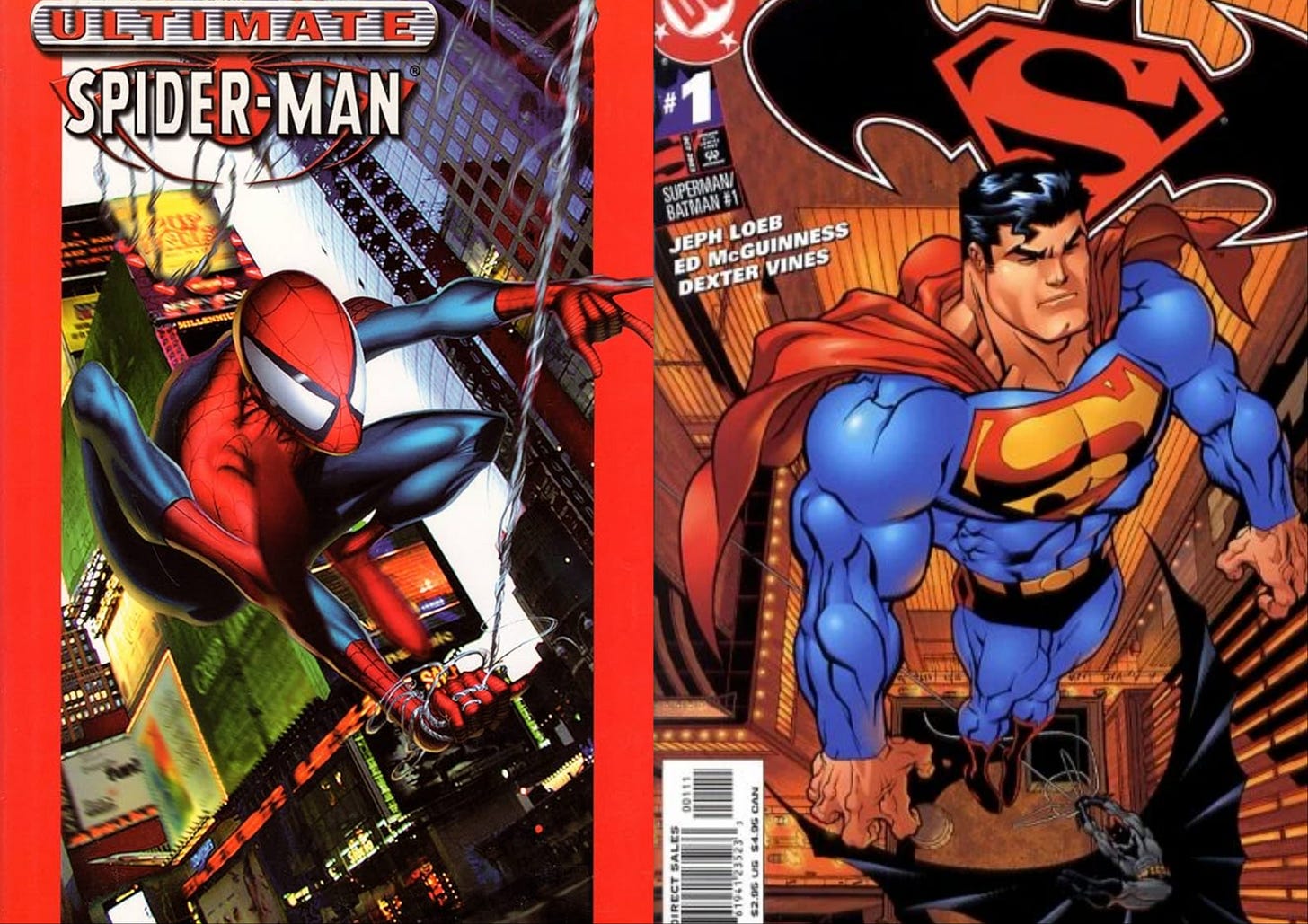
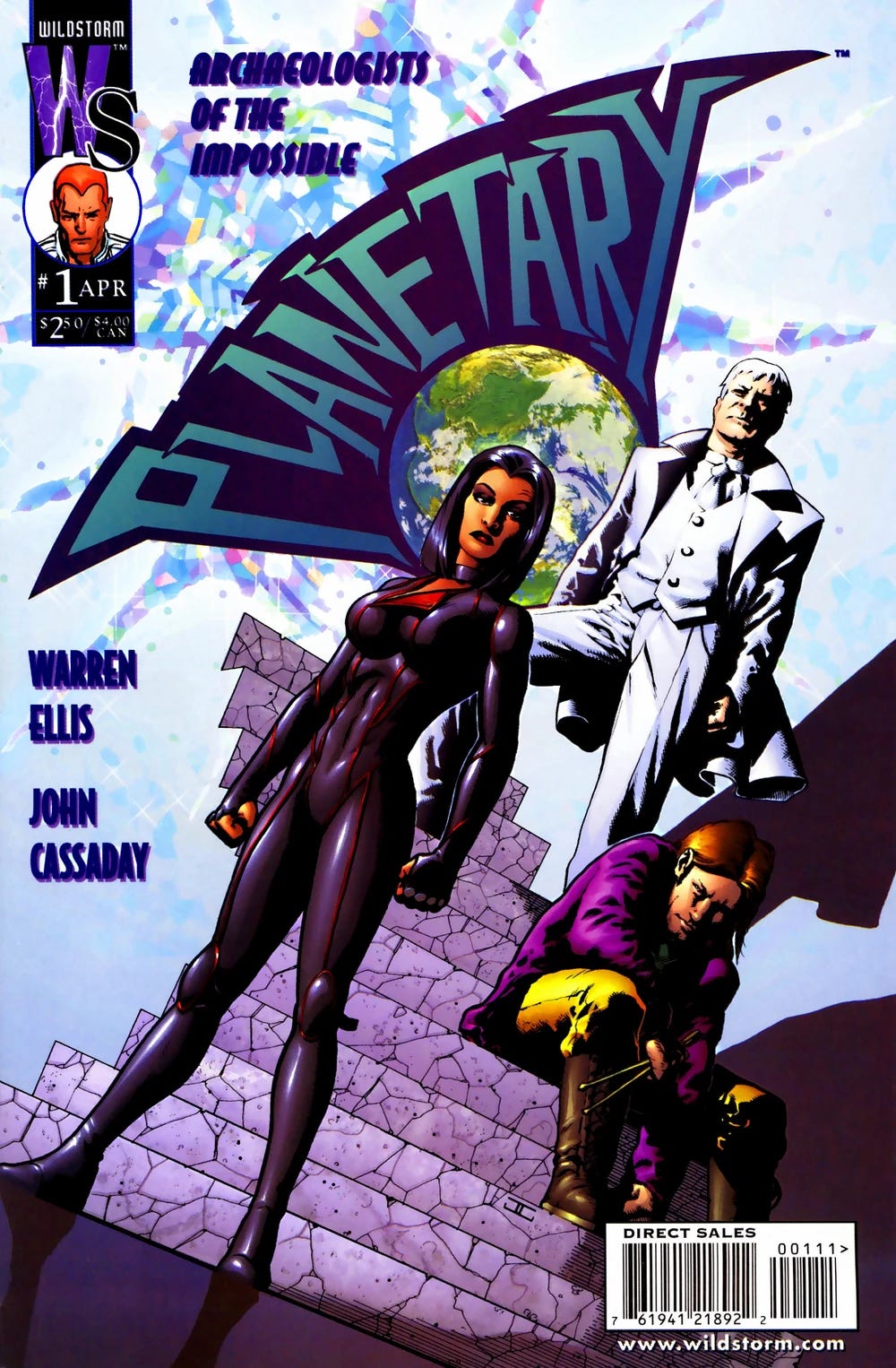
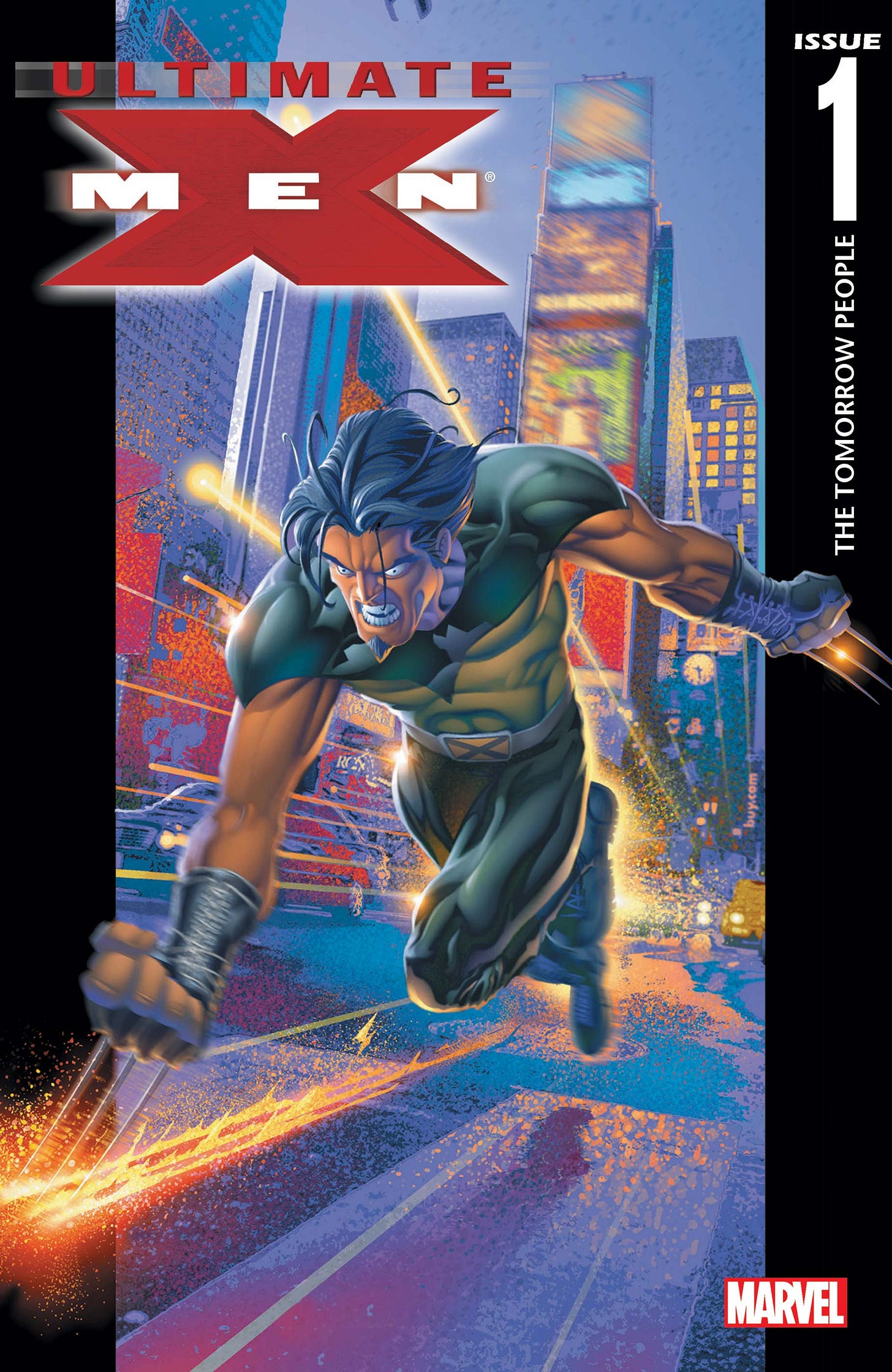
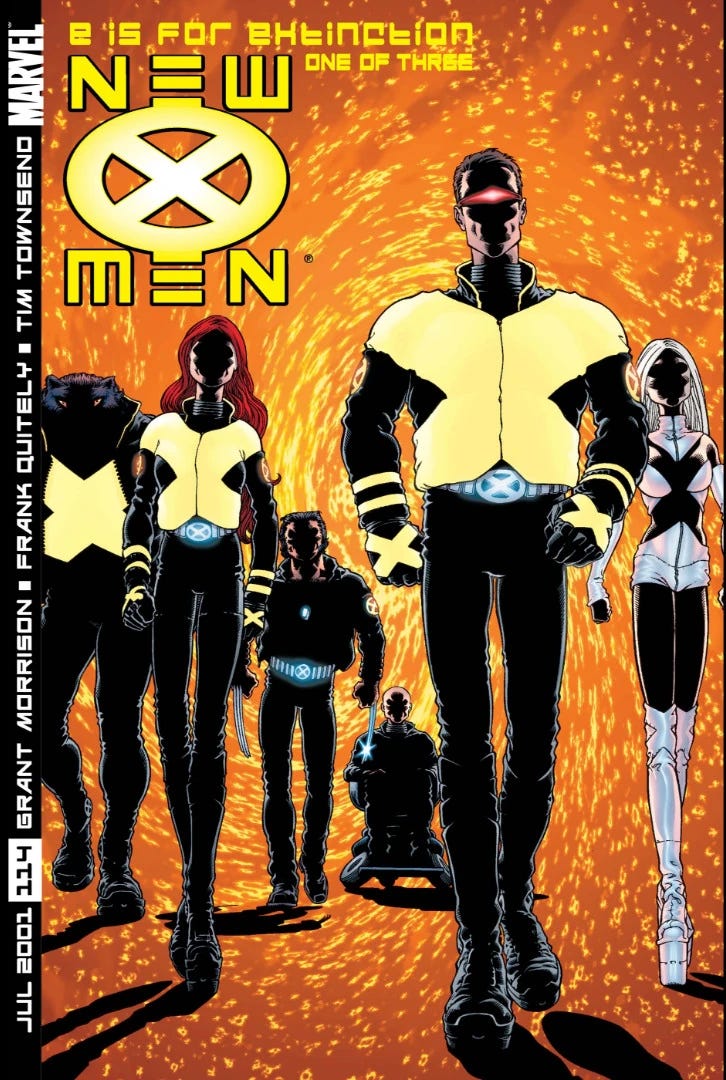
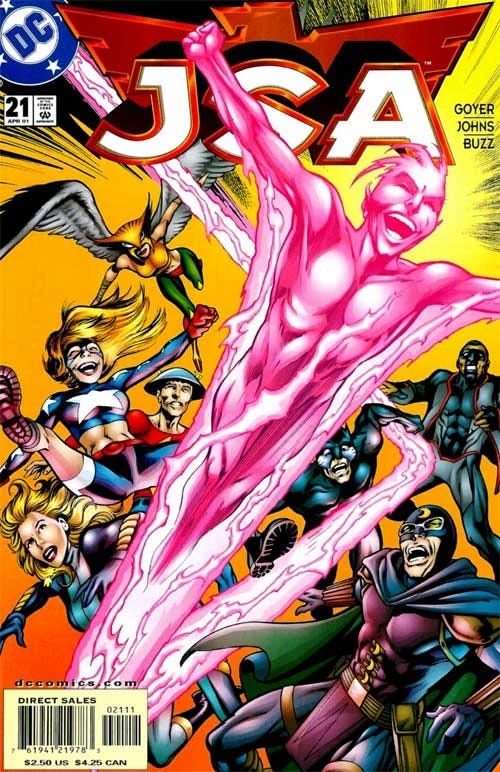
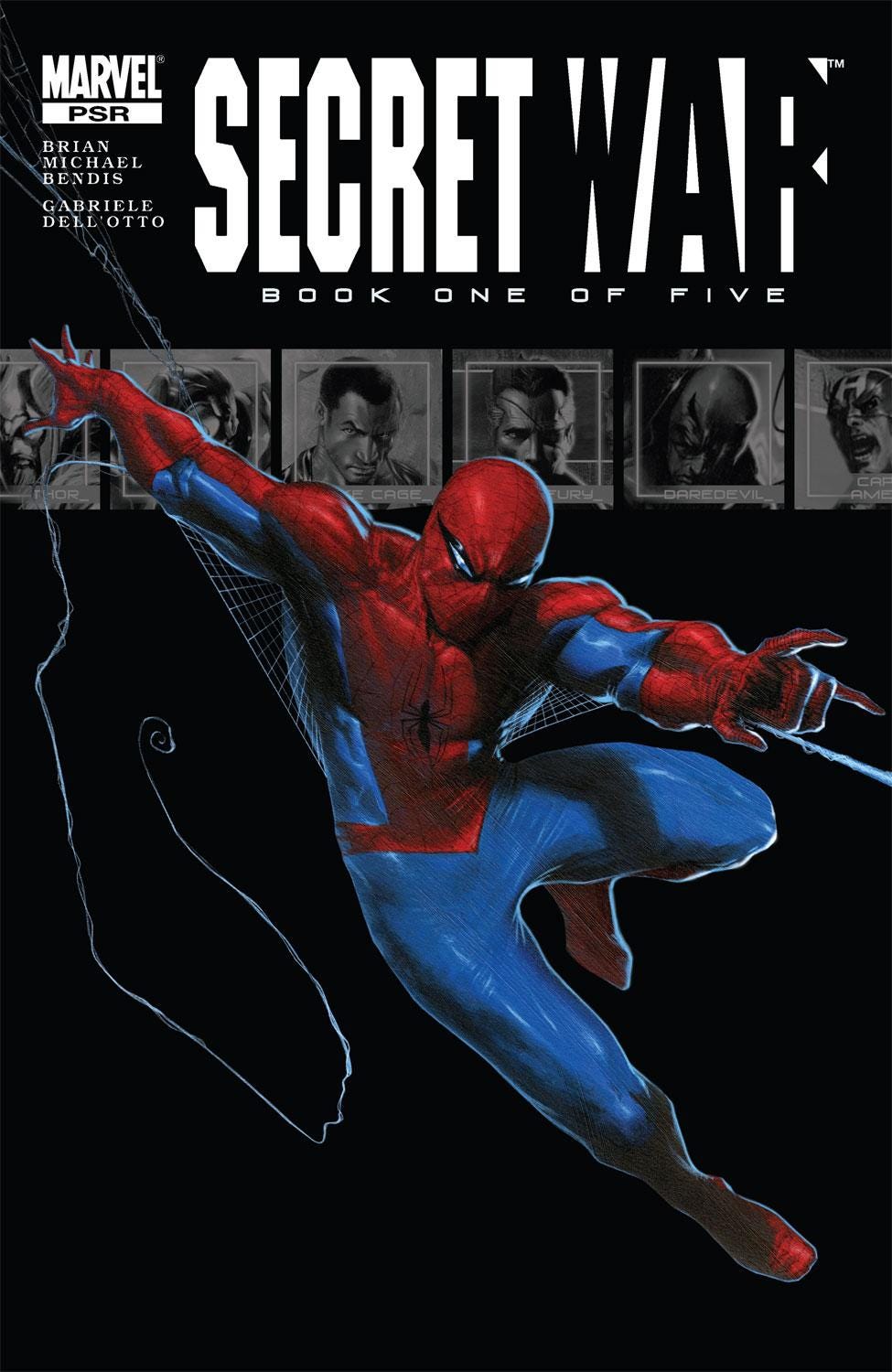
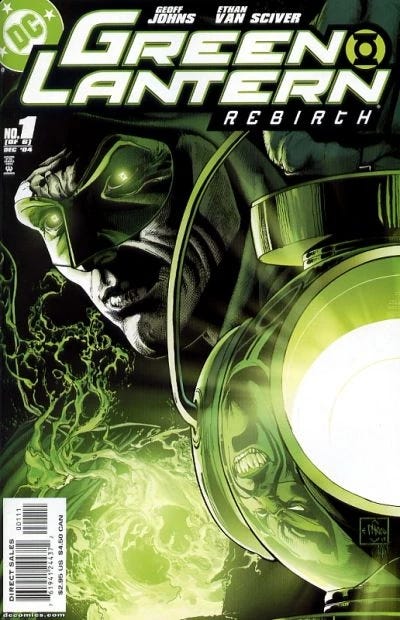
I really like this whole series of 2000s retrospective posts! My favourite decade of comics.